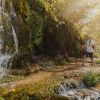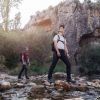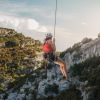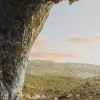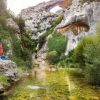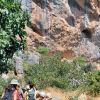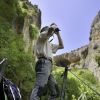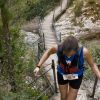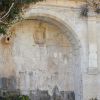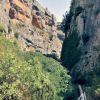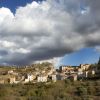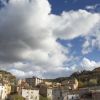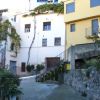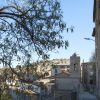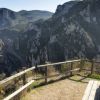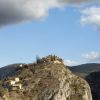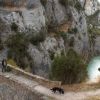Escalada
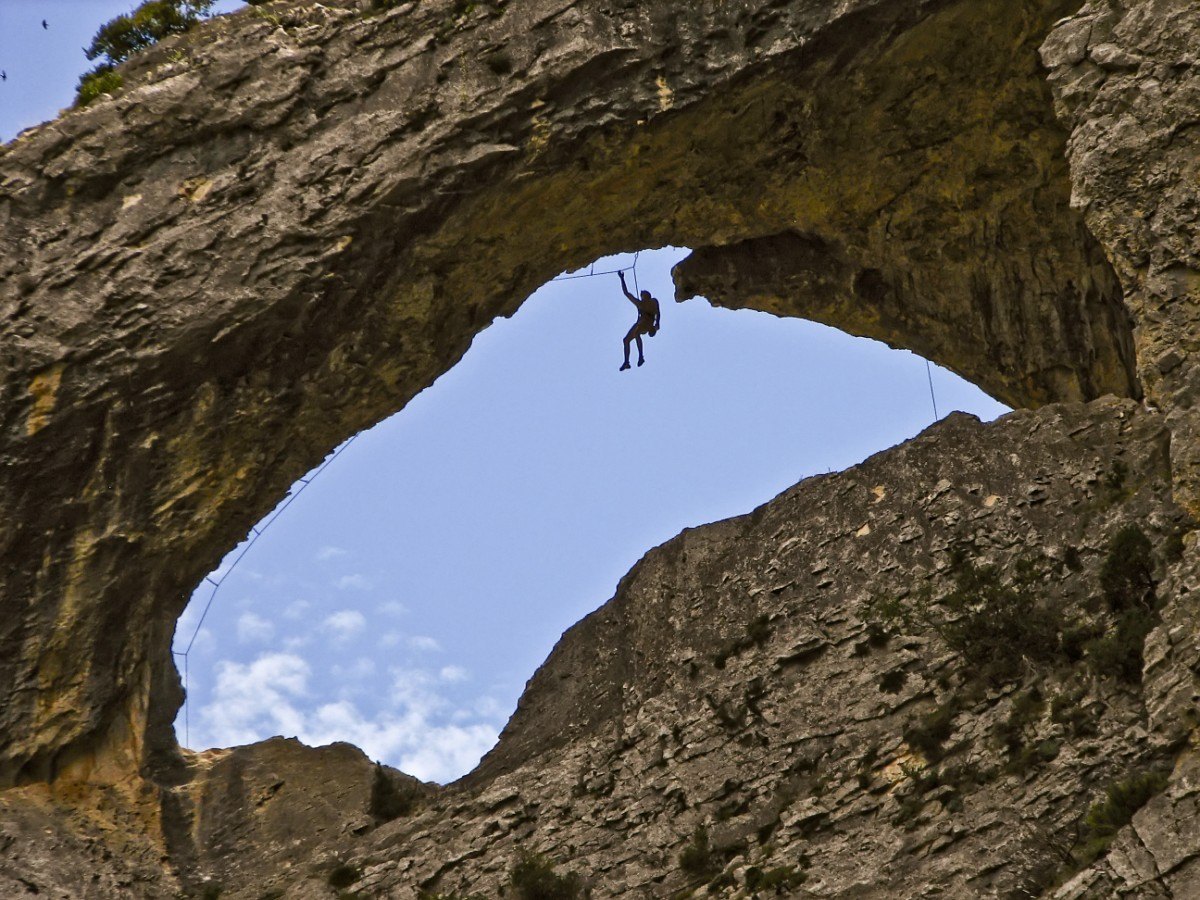
In recent years, the surroundings of Rodellar and Mascún River Canyon have become a world’s top rock climbing destination. Climbers from all over the world climb their walls throughout the year, being spring and autumn the best seasons for climbing.
The rock in Rodellar is grey limestone featuring a large amount of holes and ridges. Rodellar is worldwide known due to its demanding overhangs and challenging tufa climbing making the different routes epic. Climbing in Rodellar is very physical as high grades between seventh and eighth grades predominate.
This climbing takes place in the overwhelming Mascún River Canyon featuring spectacular geological shapes and crystal clear waters.
Technical information
- Rock type: limestone
- Number of routes: 800
- Grade: V/9a
- Length: Up to 200 m
- Face: All
- Season: All year round
Photo gallery
Map
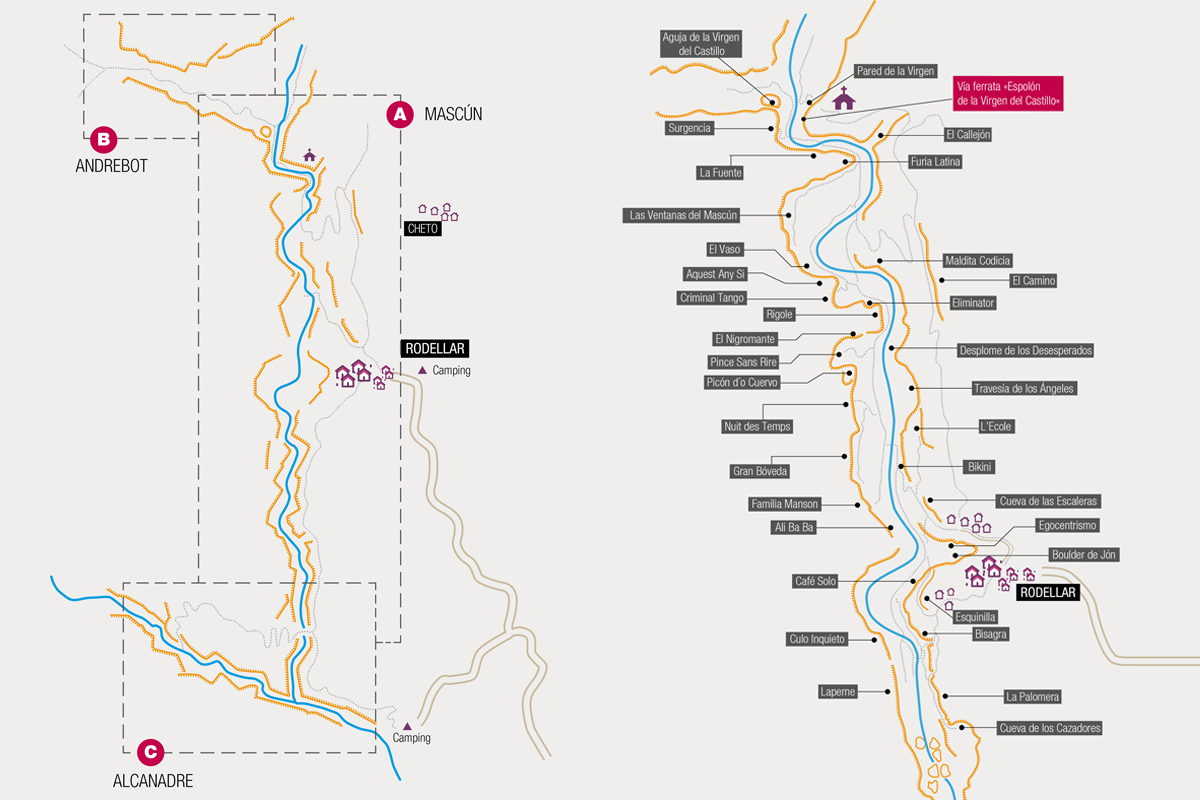
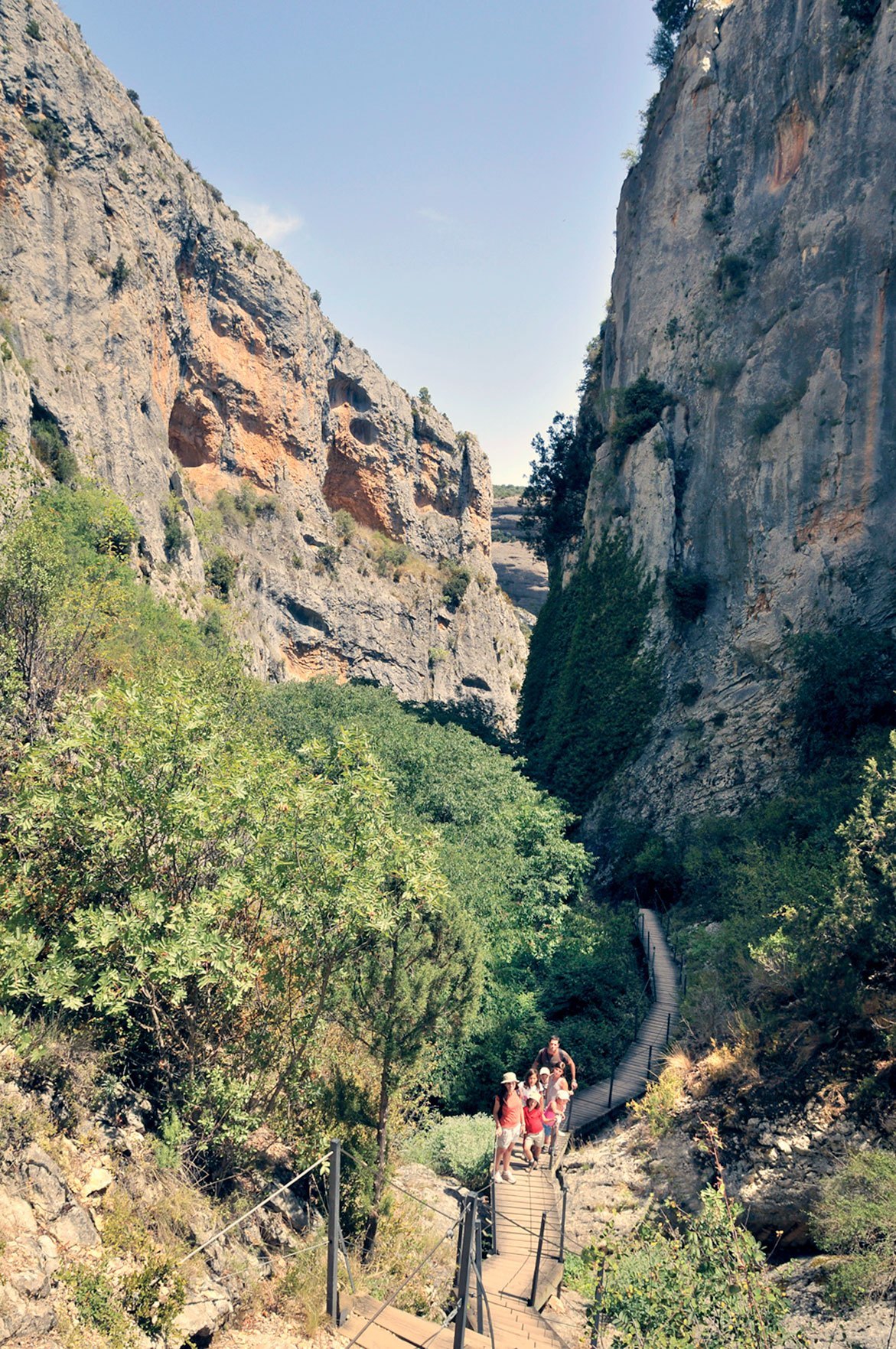
Vero River Canyon hides many different walls of top quality limestone rock as it passes through Alquézar. The most accessible walls have a large amount of demanding sport climbing routes up to 40 m in length. In recent years, new sectors of excellent quality rock such as San Pelegrín have been opened. However, there is a bird nesting regulation that prohibits climbing from April to July. On the large walls of the Vero River Canyon we also find traditional climbing routes in places likeTozal del Vero and Tozal de las Macetas. Alquézar area is very popular in winter due to its southern orientation as well as its mild climate sheltered from the wind and fog of Ebro River Valley.
Technical information
- Rock type: limestone
- Number of routes: 300
- Grade: IV/9a
- Length: Up to 340 m
- Face: All
- Season: All year round
Photo gallery
Map
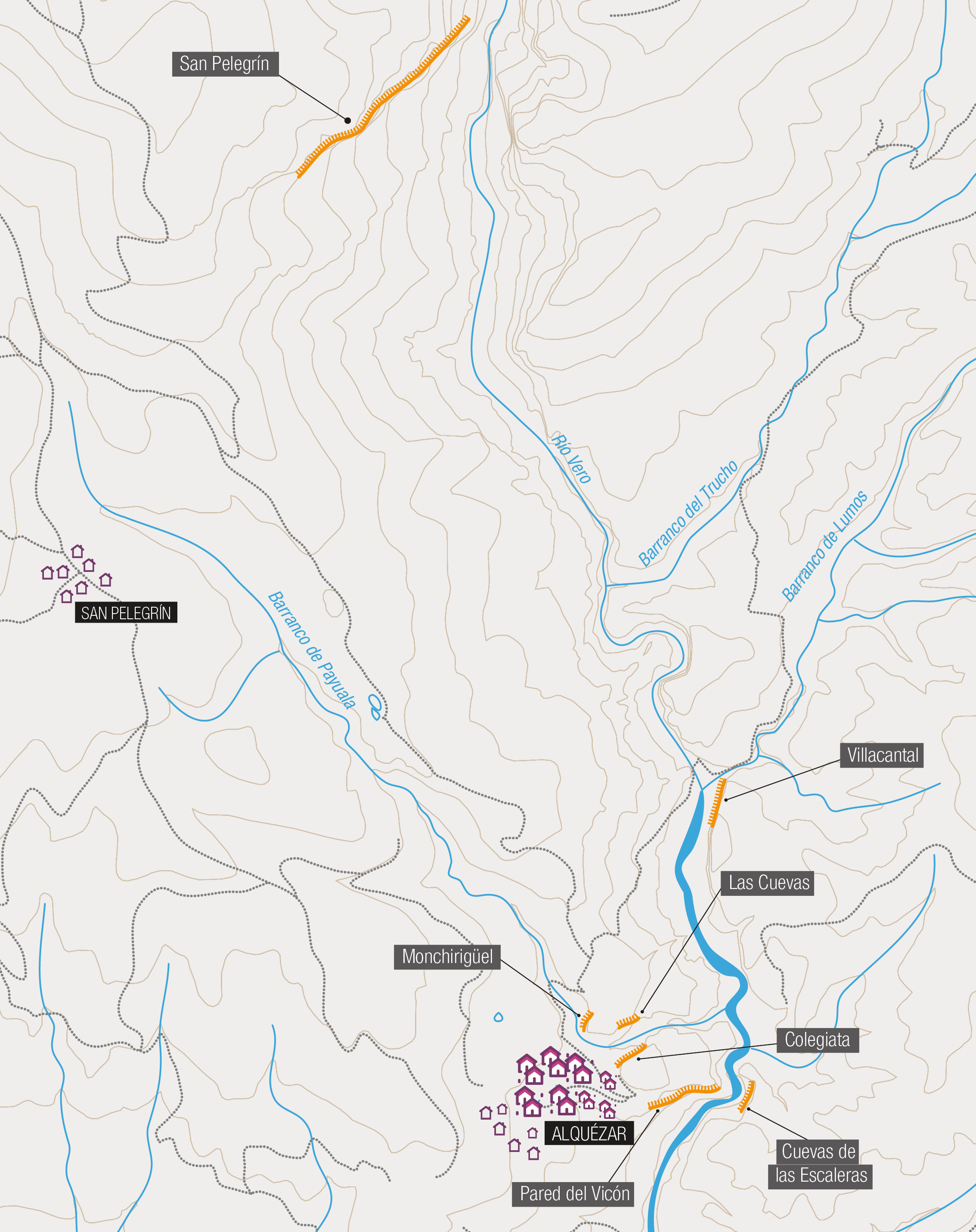
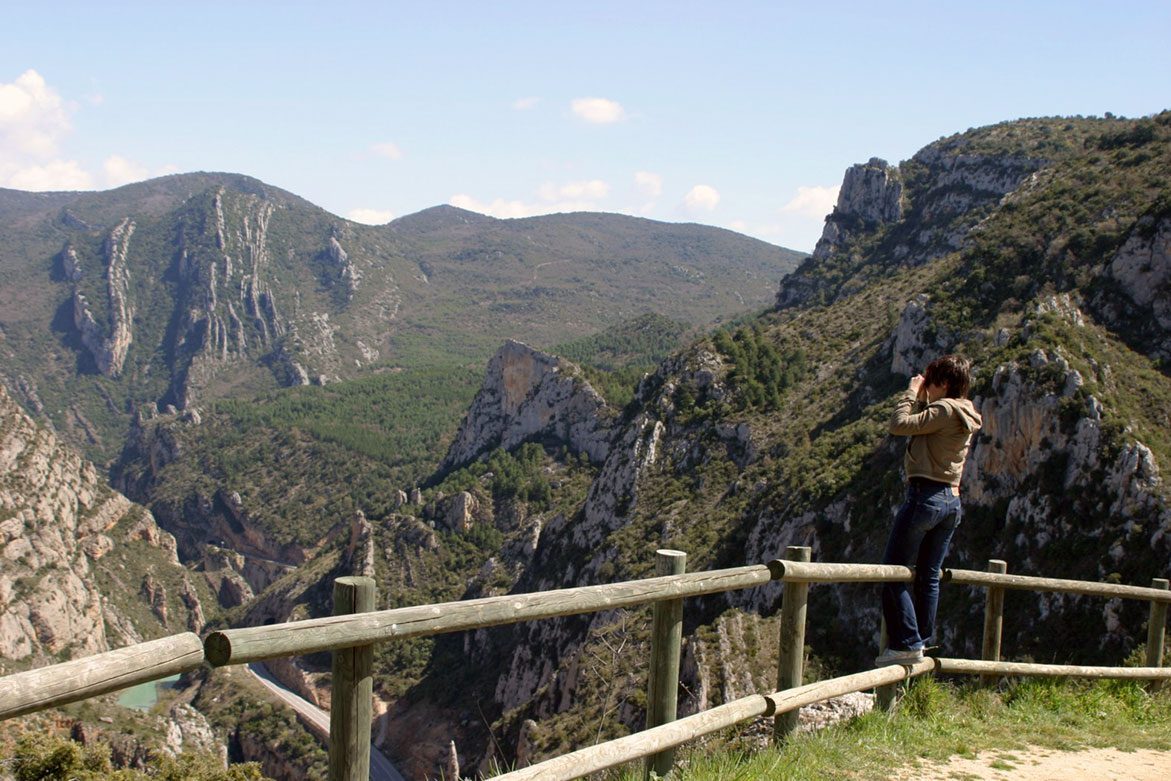
Olvena Canyon is located in Southern Pyrenees and was formed by Ésera river in the area between Graus and Barbastro. It is 8 km long and features numerous walls and needles of top quality limestone rock combined with some conglomerate zones. It includes more than 20 different climbing areas and there are many possibilities of opening new ones. N-123 road runs along the canyon giving easy access to almost all sectors. There is also a local road giving access to Olvena village located on top of the rocks.
Olvena is known for combining good sport climbing areas such as Garrapatillos Alto and Garrapatillos Bajo as well as Crestas de la Cruz with multi-pitch climbing routes such as Pared del Santo Cristo (where the popular Frixis stands out).
Technical information
- Rock type: limestone
- Number of routes: 120
- Grade: IV+/8
- Length: Up to 200 m
- Face: All
- Season: All year round
Photo gallery
Map
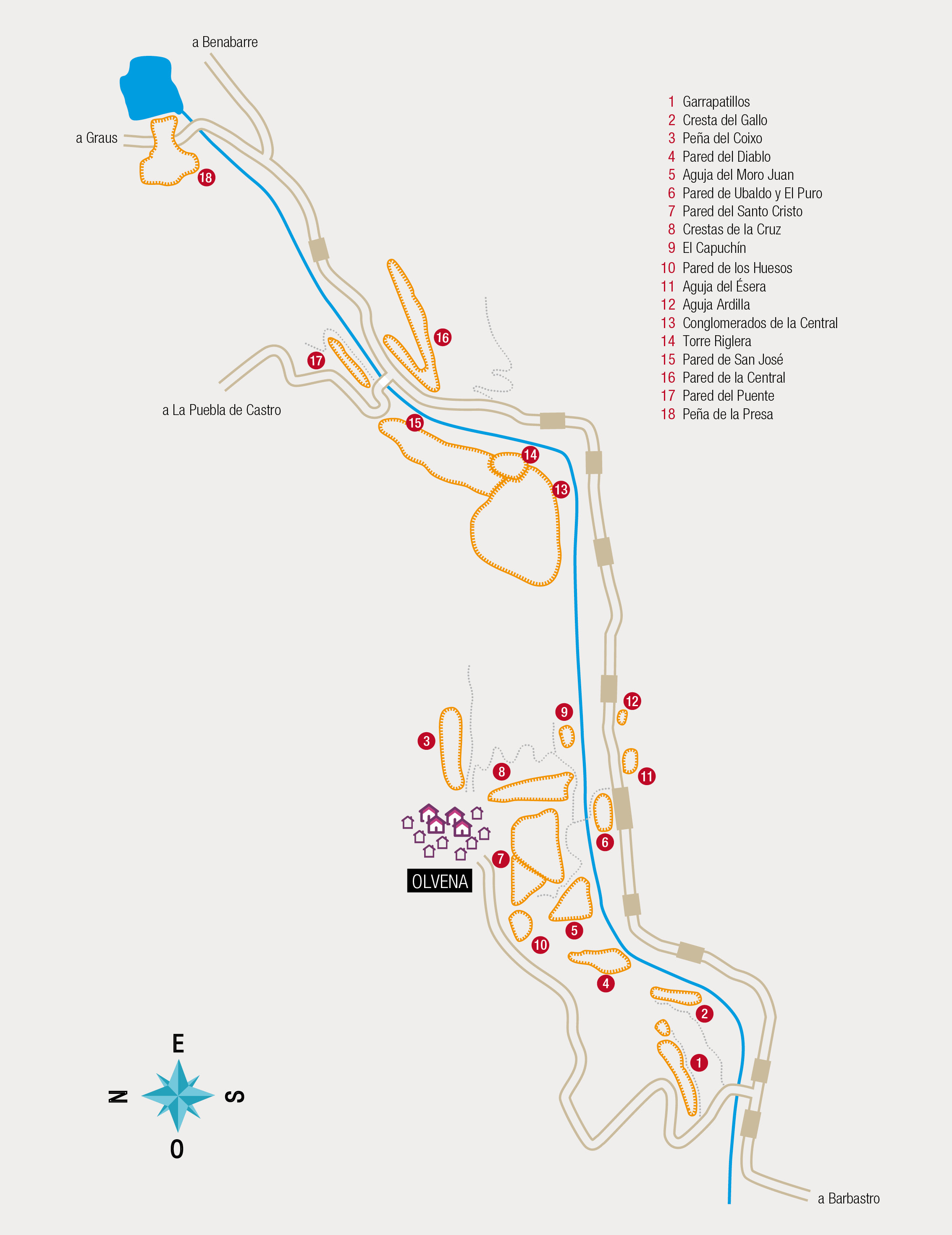

Rock climbing consists of ascending a sheer cliff that is more or less vertical. There are 3 different disciplines; traditional climbing, sport climbing and bouldering.
With traditional climbing it is necessary for climbers to take along their own specialist material in order to fix anchors and secure themselves to the rock. The climber also has to work out a suitable vertical route.
Sport climbing relies on permanent anchors of guaranteed quality already fixed to the rock in a set route to ensure that climbers cannot seriously hurt themselves if they fall.
Bouldering is climbing without any kind of rope or security anchor. They are typically short routes of up to 5 or 6 metres in height and climbers usually place a crash pad on the ground should they fall.
Climbing in the Sierra de Guara Mountains and Canyons Natural Park is regulated. Please consult the regulations.













